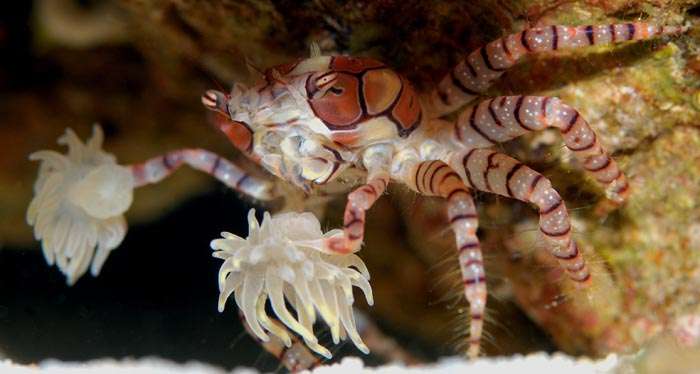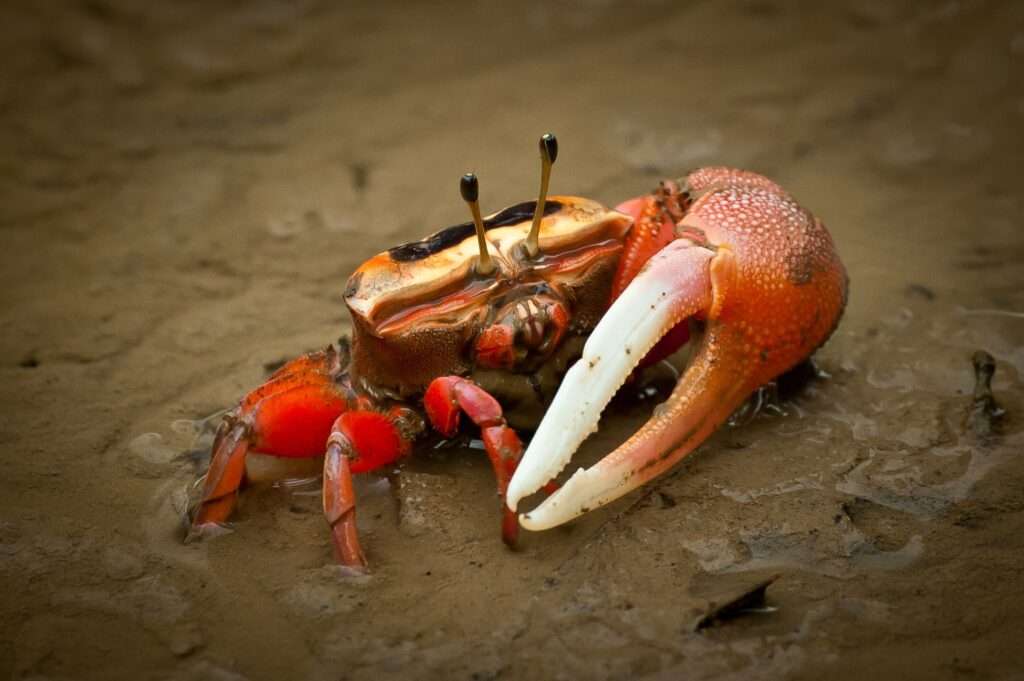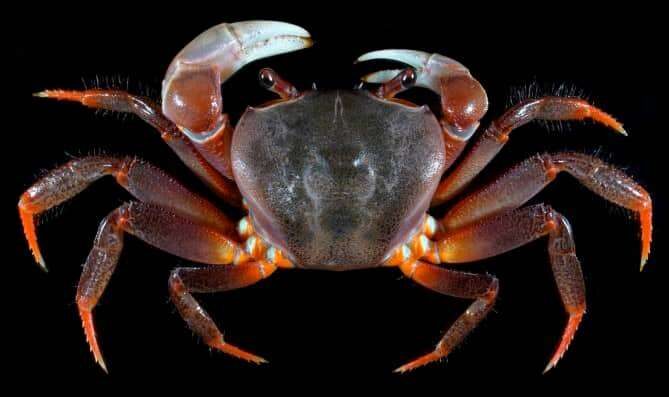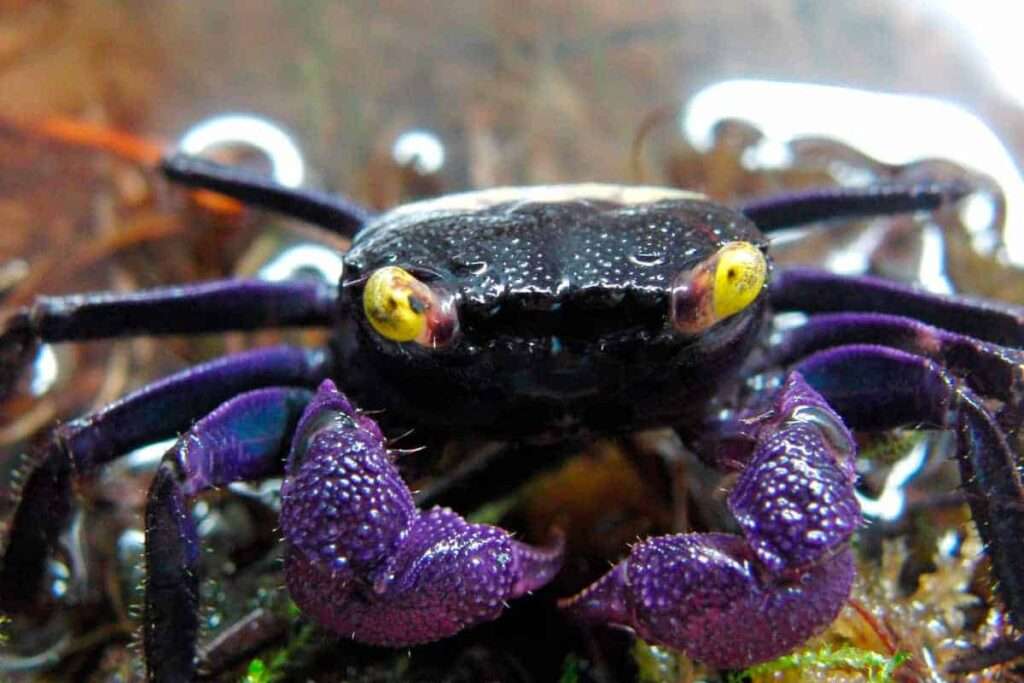
Description
Scientific Name: Lybia leptochelis
The majority of aquarists ignore the charming and unique Pom Pom crabs. It gets its name from the hair that grows out of its arms, as the name would imply. They have the appearance of holding cheerleader pom poms thanks to the hairs that grow from the claw! Males have fairly thick and lengthy bristles. Females hardly ever notice them. In addition to their well-known pom poms, these crabs show a variety of distinctive physical characteristics.
The crab’s shell is relatively broad for its size. The legs are lengthy and slender as well. Most examples are light brown or golden in colour. Their shell may have a few deeper brown specks splattered all over it. Males and females may be distinguished from one another with ease. Look at the claws’ hair and see how long it is. The crab’s belly can be looked at as well. All crabs, including pom poms, have a distinctive plate. The size and shape of the apron vary depending on whether it belongs on a man or a woman. The apron of a man is wide and curved, as opposed to that of a woman, which is thin and narrow.
Habitat
They can be found in Madagascar and Taiwan as well as the tropical regions of Asia and Africa.
Behavior
The calm pom pom anemone crabs usually leave their tank mates alone. Nevertheless, they continue to be opportunistic feeders and may occasionally go after fish, prawns or snails. This happens infrequently, and the crabs typically coexist peacefully.
As Pet/ In Captivity

Tank Requirements
These crabs were discovered in the wild under various-sized basalt boulders and coral debris in subtidal areas. Our goal is to imitate their natural surroundings as a result. Make sure to provide a lot of small caverns, nooks, and crannies for them to hide in and skulk. Offer them live pebbles and debris. They won’t be content in a tank with a bare bottom, but as long as they have somewhere to hide, they will survive.
Lybia tesselata should be kept in tanks that are at least 5 gallons in size. The ability to maintain water parameters may be improved by tank size. The only drawback is that these tiny crabs will get lost in large aquariums and you probably won’t see them for a while. Furthermore, if you choose to spot feed them in larger tanks, it is more difficult to locate them. Due to their small size, it is simpler to monitor and ensure that these species are receiving their food in a smaller tank.
Diet
Lybia tesselata is an omnivore (with a preference for meat) who consumes a wide variety of meals, including copepods, plankton, rotifers, sinking pellets, squid, mysis shrimp, brine shrimp, frozen foods, and others.
Suitable Tankmates
Despite the pompom anemone’s, these anemones can be used by crab for self-defense, however it may not always be sufficient. Simply watch out for animals that are obvious predators that will attack and consume crab.
Several carnivorous fish species are known to prey on it, but its stinging anemones may scare others off. Large dotty backs, hawk fish, wrasses, sand perches, and puffers could attack them. Actually, they don’t like any kind of fish. As a result, they frequently conceal throughout the day and emerge to feed at night.
Table





